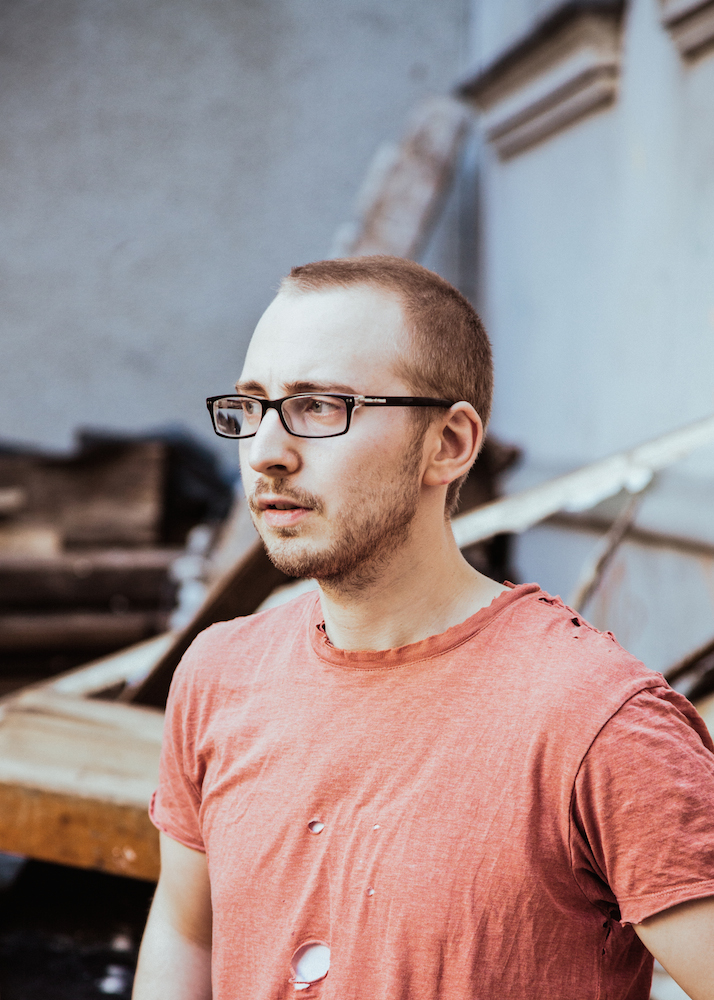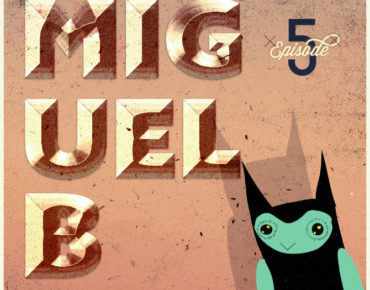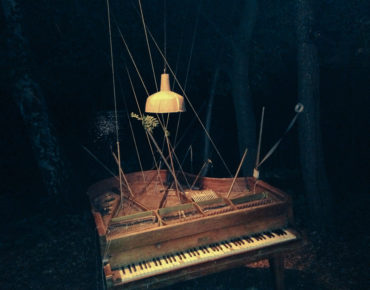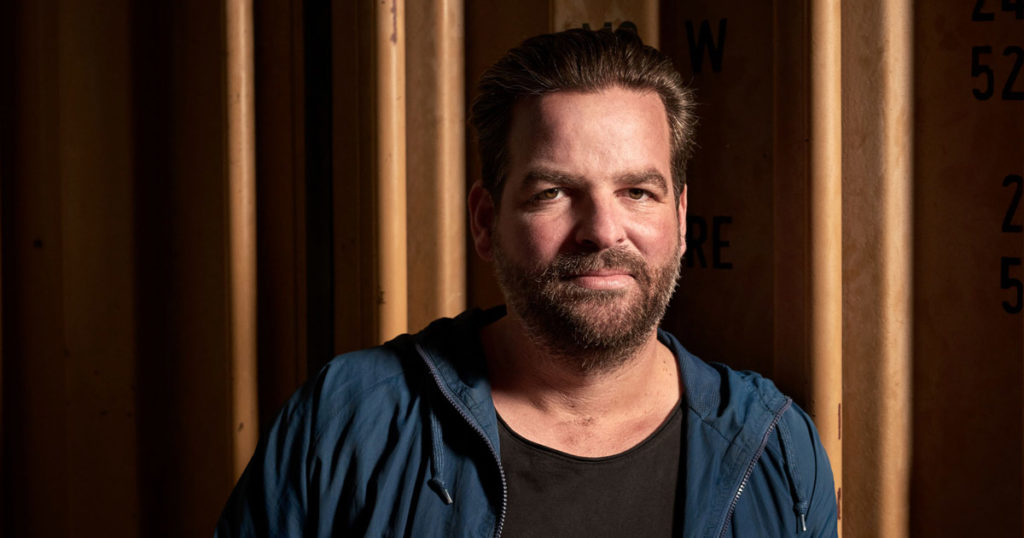written by Alex Kralikas
Sean Pineiro just recently released his debut album, Saved Once Twice, on Cologne-based record label Ki Records. Sean’s music is down-tempo, sample-based electronic music, which Ki Records praised for its complexity. In fact, it’s the complexity of Sean’s music that eventually led Ki Records to release his debut album.
Saved Once Twice is a layered, moody catalogue of tracks with a vast palette of sounds, ranging in harmonies and piano chords, with lush vocals and synths. The album fits nicely on Ki Records, who have an array of sophisticated releases from artists like Christian Löffler, Daisuke Tanabe and Arp Aubert.
Click on the button to load the content from SoundCloud.
Witness This caught up with Sean recently to talk about the release of his debut album and the musical path he went on to produce one body of work while switching between New York, Barcelona and Berlin. Sean talks candidly about his journey, from discovering J Dilla and Flying Lotus inspired beat music, to changing his whole production style when he discovered sampling to being stirred by ambient and experimental electronic sounds. Sean has a vast musical and production knowledge, but also has vision for exploration of new sounds and is inspired by the subconscious, like dreams and falling asleep to music.
“I thought the way to make electronic music was just through synthesizers, or drum machines, but when I started sampling it really changed everything for me. Sometimes I sample up to 20 different artists on one track.”
WT: When did you start making electronic music?
Sean Pineiro: I was twenty-one years old or so when I started making electronic music. I also studied music composition at CCNY New York.
WT: Were you making music before you went to CCNY?
Sean Pineiro: Yeah I have been playing piano my whole life. Actually, originally I wanted to be a Jazz pianist.
WT: Does your musical education influence your production style?
Sean Pineiro: Totally. Most of my songs are super structured. There’s chord progressions, bridges, there’s an A part and B part – they are really written out pieces. The songs in the album are mostly structured in the way a band would structure a song – there’s a bass line, there’s harmonies and there’s a melody.
WT: When did you start sampling? Were you always good at that?
Sean Pineiro: Actually, when I first started making electronic music I wasn’t using any samples at all. I was just using soft synths. I thought the way to make electronic music was just through synthesizers, or drum machines, but when I started sampling it really changed everything for me. Sometimes I sample up to 20 different artists on one track.
WT: Wow. You would have to have a very strong musical ear to be able to hear all of those samples.
Sean Pineiro: You know, to me it’s like my own little inside joke. When I listen to my own tracks I’m hearing lots of different sounds. It could be a simple sound like someone knocking on a piece of wood, but I actually know it’s a John Cage sample. I’m sampling so many different things – from old TV commercials to movies. One thing I sampled, for example, is a promotional radio spot from the 1960s or 1970s where they are selling a Vocoder.
WT: Ki Records said that the complexity of your work is what made them decide to release your debut album. How do you come around with a track?
Sean Pineiro: Just totally messing around. It’s always these mistakes that somehow match up. I think there’s a lot of stuff you don’t hear in the track as well, I mean you hear a lot of samples but actually behind those samples there’s chords that I’m playing on synthesizers and that’s kind of like the structure. So if a sample doesn’t fit into that sort of harmony, then it’s not going to work. Or it could be vice-versa. I may really like a sample, and then shape a harmony around that. The second I have that main sample or that main harmony that I’m working with, the skeleton of the track is pretty much in place. But like I said, towards the end of the album, I wasn’t really thinking like that so much.
WT: Do you also sample real life sounds?
Sean Pineiro: There’s a few times I’ve picked up a hand held recorder and sampled stuff, but it’s not my favourite thing to do. I prefer taking samples from somewhere else, and reformatting them myself. For example, I found a guy on Soundcloud who does a lot of field recordings.
WT: What software do you use?
Sean Pineiro: Ableton, only Ableton – and lots of plug-ins.
WT: I remember checking out your music back when you went under the name ‘Muramic’ in 2012 and your early track ‘Green Copy’ really stood out to me as chill out music. Would you say the same for the whole record?
Sean Pineiro: Yeah for the most part that’s how I would describe the whole album – headphone or chill out music.
WT: Were you going for that particular vibe when you starting making Saved Once Twice?
Sean Pineiro: I wasn’t actually consciously making an album or aware that I was going to make an album until there was about 4-5 tracks done. But after I started talking to Ki records about putting out an album with them I started working on it nonstop.
I wasn’t thinking too much about what I wanted it to sound like. Meaning, I wasn’t thinking I need to have ten super heavy tracks and two ambient tracks and two melodic tracks, I just wanted to make sure it had an album feel.
WT: I can hear an influence from Mount Kimbie, were they an inspiration to you?
Sean Pineiro: Yeah Mount Kimbie and also James Blake were huge influences. When I first started making this kind of music I was actually listening to a lot of Flying Lotus, and my earlier stuff really fits into the “beat music” genre. Releases like early Flying Lotus and Samiyam. At the beginning I just wanted to make super swung Hip-Hop instrumental music and I ended up making a bunch of tracks in this style. I think you can especially hear that with ‘Reaper’, that’s the earliest track on the album.
WT: So the album was made over a long time, were you listening to different music at the end of the production of the album to the start?
Sean Pineiro: When I was finishing the album, I was going to a lot of experimental music gigs here in Berlin. I can’t really pinpoint exactly the artists I was listening to after I started talking to Ki records, but I was into more ambient music. Most of these gigs were either instrumental improvisational music or noise or drone music. Where some of my earlier tracks had more of a solid beat, the beat kinda got lost as the album progressed.
WT: Has the club scene here in Berlin helped shape your production style?
Sean Pineiro: The club scene here in Berlin hasn’t specifically influenced the tracks in this album. The only thing I would say I took inspiration from in Berlin is the experimental scene here. Places like Ausland and the venue West Germany. For example, the track ‘Medallion’ is more ambient, and ‘Freylock’ came about when I wasn’t thinking about anything specific, I was just messing around.
WT: So your style has changed over time. Will you continue to produce the same style of music as in Saved Once Twice for future releases?
Sean Pineiro: Right now, since I finished the album, I’ve been making totally different music. However, I’m not ready to start talking about what it sounds like just yet. I might not want to go ahead with it, but yeah, it’s totally different to the music on the album. What I can say though is that it’s not dance music; it’s more closely associated with experimental electronic music.
WT: Cool. How’d you get signed with Ki Records?
Sean Pineiro: Sending demos. I was sending a lot of demos. I was working in a hotel at the time; I didn’t have time to make music so what I did every day before work was send demos. At the same time I had a lot of offers from other record labels. There’s a lot of good music out there, and a lot of shitty music, and a lot of the time you’ve got a lot of bad music going to good record labels and good music going to really small record labels that can’t really push the artists forward. I’m not saying I’m more, or less deserving of a release on Ki records, but my goal was to get the best record label that I possibly could.
WT: Are you happy about releasing on Ki?
Sean Pineiro: Yeah. I’m happy I went with Ki for many reasons. One of them being that it’s not just a “beat music” record label. I was really happy to have my music released on a label that has a wider scope. The record label spans over different genres with their releases, so that means there’s a more diverse audience it reaches out to. I consider myself quite lucky to get their attention.
WT: Why did you decide to send your demo to Ki?
Sean Pineiro: The reason I sent the demo to Ki Records was because of Daisuke Tanabe. He played at a venue here in Berlin called Gretchen, with Kidkanevil, this was over a year ago, a few weeks before the gig I saw an interview of his on Youtube where he mentioned Ki Records.
WT: That’s cool because he ended up doing a remix of your track ‘Grounds’. How’d that come about? Are you a fan of the remix?
Sean Pineiro: Yeah, that was really easy. I just told Paul (the head of Ki Records) that I really wanted a remix by Daisuke, and he was like, yeah no problem. And yeah, I love the remix he did, it’s great.
WT: Will you be doing a tour of the album?
Sean Pineiro: Right now I’m working on a live set, but I really don’t know what it’s going to end up sounding like. I’m not trying to jump ahead of myself. I’d like to have a live set with an hour’s worth of material that’s made up of a combination of tracks off the album and new stuff, like 80% new stuff and 20% of the music I’ve already released.
WT: If you could tell people how to view your record, what would you say to them?
Sean Pineiro: I really don’t care; I think thinking like that would drive someone crazy. Of course I want people to enjoy it, but I don’t want people to see it the way I see it. I want them to just have their own natural response to it, whether they like it or not.
___
Get your full copy of ‘Saved Once Twice’ through iTunes or Amazon U.S. | UK | Germany.








